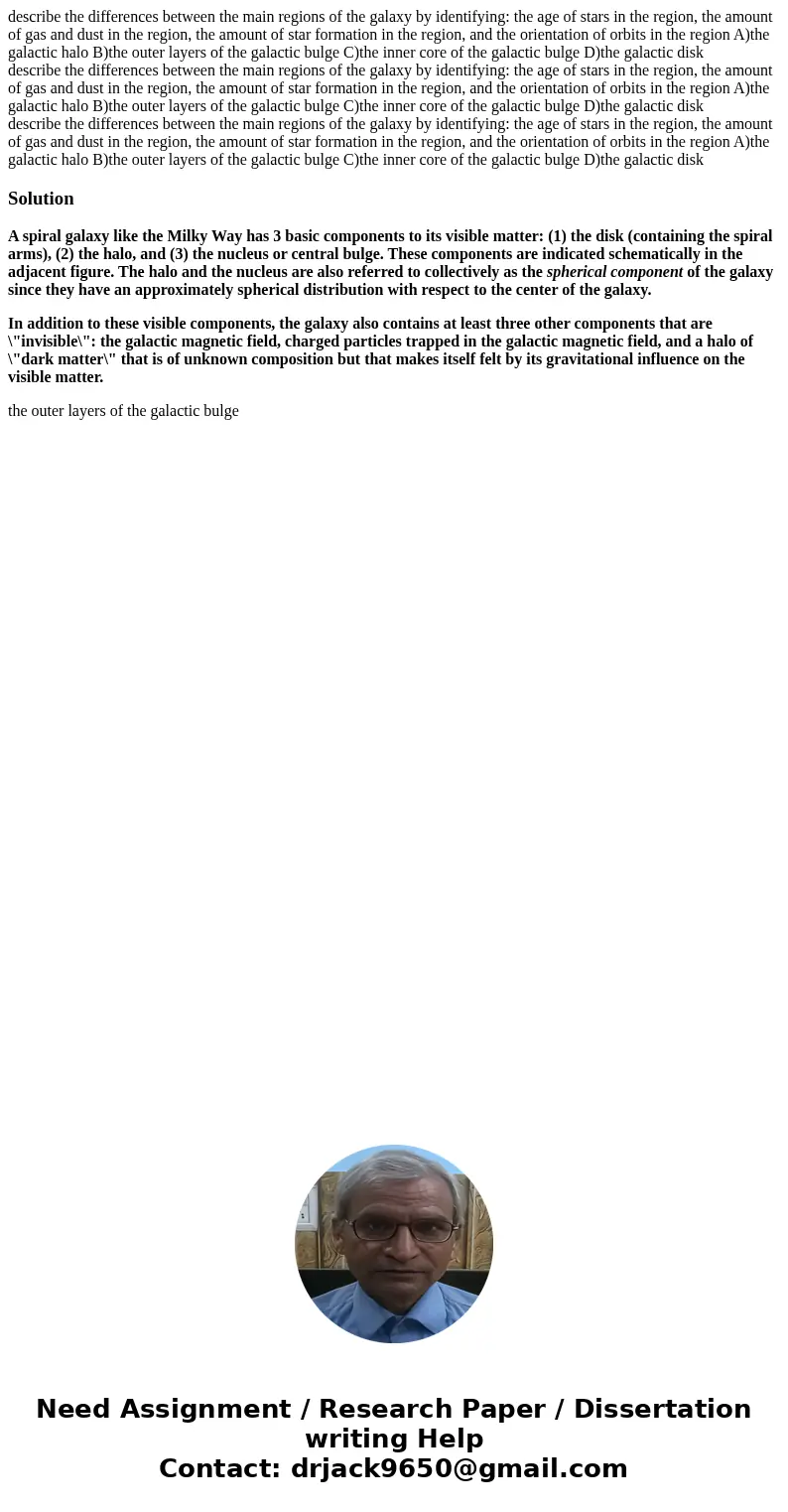describe the differences between the main regions of the galaxy by identifying: the age of stars in the region, the amount of gas and dust in the region, the amount of star formation in the region, and the orientation of orbits in the region A)the galactic halo B)the outer layers of the galactic bulge C)the inner core of the galactic bulge D)the galactic disk
describe the differences between the main regions of the galaxy by identifying: the age of stars in the region, the amount of gas and dust in the region, the amount of star formation in the region, and the orientation of orbits in the region A)the galactic halo B)the outer layers of the galactic bulge C)the inner core of the galactic bulge D)the galactic disk
describe the differences between the main regions of the galaxy by identifying: the age of stars in the region, the amount of gas and dust in the region, the amount of star formation in the region, and the orientation of orbits in the region A)the galactic halo B)the outer layers of the galactic bulge C)the inner core of the galactic bulge D)the galactic disk
A spiral galaxy like the Milky Way has 3 basic components to its visible matter: (1) the disk (containing the spiral arms), (2) the halo, and (3) the nucleus or central bulge. These components are indicated schematically in the adjacent figure. The halo and the nucleus are also referred to collectively as the spherical component of the galaxy since they have an approximately spherical distribution with respect to the center of the galaxy.
In addition to these visible components, the galaxy also contains at least three other components that are \"invisible\": the galactic magnetic field, charged particles trapped in the galactic magnetic field, and a halo of \"dark matter\" that is of unknown composition but that makes itself felt by its gravitational influence on the visible matter.
the outer layers of the galactic bulge

 Homework Sourse
Homework Sourse